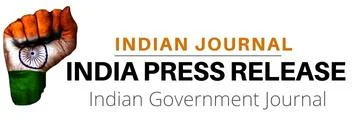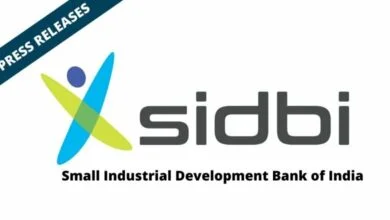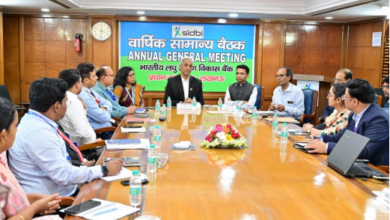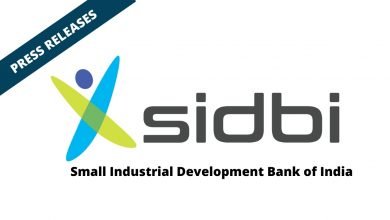MSME Credit Demand Surges as Markets Open Post Unlock in Jun’21: SIDBI -Trans Union CIBIL MSME Pulse Report
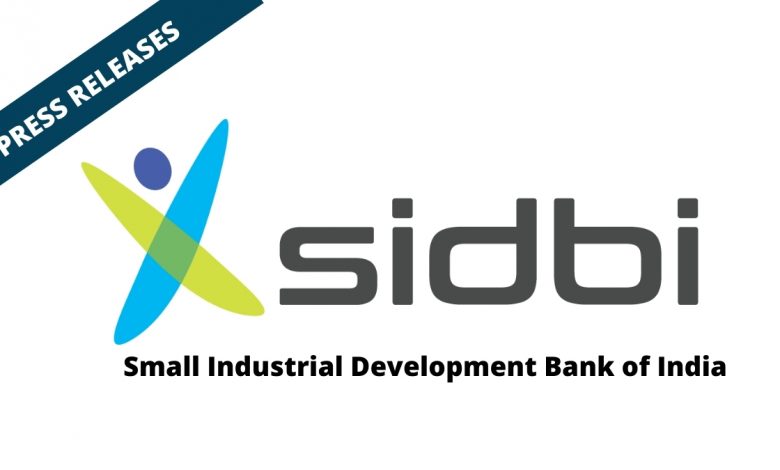
Findings from the latest edition of the SIDBI – TransUnion CIBIL MSME Pulse Report indicate that in FY 2021, loans worth ₹9.5 lakh crores were disbursed to MSMEs. This amount is much higher than the preceding year- FY 2020, when loans amounting to ₹6.8 lakh crores were disbursed. Government interventions like Emergency Credit Line Guarantee Scheme (ECLGS) under the AtmaNirbhar Bharat program were the major factor in driving this significant surge in credit disbursement to MSMEs. The total on-balance sheet commercial lending exposure in India stood at ₹74.36 lakh crores in March ’21, with a YOY growth rate of 0.6%. MSME segment’s credit exposure stood at ₹20.21 lakh crores as of March ’21, showing a YOY growth rate of 6.6%. This credit growth is observed across all the sub-segments of MSME lending.
Credit demand sees a sharp surge post unlocks after both the pandemic waves
Report analysis shows a significant surge in credit demand post unlocks after the 1st and 2nd waves of the pandemic. Followed by the initial drop in commercial credit enquires by 76% during the 1st wave, they recovered rapidly backed by ECLGS intervention and have since sustained close to pre-COVID-19 levels. March ’21 commercial credit inquiries were at 32% over pre-COVID-19 levels; this strong momentum was impacted by the 2nd wave, but June ’21 again showed a sharp recovery to pre-COVID19 levels.
Speaking on the findings of the MSME Pulse, Shri Sivasubramanian Raman, Chairman and Managing Director of SIDBI said, “The MSME credit data speaks volumes of the success of the ECLGS scheme. The scheme has played a major role in 40% Y-o-Y growth in disbursements to the sector, thereby reviving the business sentiments among the MSMEs. The key highlight which signals the revival is a credit to new-to-bank (NTB) which has returned back to pre-COVID levels, while credit to existing-to-bank (ETB) remains buoyant. The recent additional relief measures by Government, especially in healthcare, travel, and tourism, are expected to improve credit offtake in the MSME sector. Going forward, the lenders need to continuously monitor the health of credit portfolios, while sustaining credit growth to MSMEs.”
Speaking on the findings of the MSME Pulse, Shri Sivasubramanian Raman, Chairman and Managing Director of SIDBI said, “The MSME credit data speaks volumes of the success of the ECLGS scheme. The scheme has played a major role in 40% Y-o-Y growth in disbursements to the sector, thereby reviving the business sentiments among the MSMEs. The key highlight which signals the revival is a credit to new-to-bank (NTB) which has returned back to pre-COVID levels, while credit to existing-to-bank (ETB) remains buoyant. The recent additional relief measures by Government, especially in healthcare, travel, and tourism, are expected to improve credit offtake in the MSME sector. Going forward, the lenders need to continuously monitor the health of credit portfolios, while sustaining credit growth to MSMEs.”
The profile of MSME borrowers getting fresh loans has changed in 2021
In order to understand the insights on the key shift in MSME lending, this edition of MSME Pulse covers an analysis1 of borrower profiles of entities getting funded post-COVID wave-1 compared to entities getting funded pre-COVID wave-1. CIBIL Rank (CMR) assigns a rank to the MSME based on its credit history data on a scale of 1-10, CMR 1 being the best possible rank and CMR 10 being the riskiest rank for MSMEs. Post-COVID wave-1, there’s a reduction in new originations on high-risk MSME entities (CMR 8–10). This reduction is offset by an increase in originations in CMR 6–7, implying lenders’ reduction in risk appetite and the difficulty in finding good MSMEs in the range of CMR 1-5 in the current uncertain environment. This trend is also echoed through an analysis done using TransUnion CIBIL’s CreditVision® (CV) algorithm of missed payments, which shows that finding MSMEs with an absolutely clean track record is harder. The analysis captures the payment behavior of MSMEs against their outstanding obligations. Insights reveal that:
▪ Of the MSME that was given loans in the period of January to March ’21, 29% had missed more than one payment in the last three months
▪ Of the MSMEs that were given loans during January to March ’20, 21% had missed more than one payment in the preceding three months
“The significant surge in MSME credit demand post gradual reopening of the markets reasserts India’s growth story. The government’s pro-growth initiatives like extending ECLGS support to the tune of ₹4.5 lac crores, regulatory reforms like restructuring of loans, and the swift implementation of these initiatives by banks & credit institutions using data analytics have fortified MSMEs. With these progressive policies and support, India’s MSME sector is set on a definite resurgence trajectory and this bodes well for the future strength and growth of our economy,” said MD & CEO of TransUnion CIBIL, Shri Rajesh Kumar.
Regular portfolio monitoring based on CMR vital for controlling stability An accelerated increase in credit balances in the recent quarters — especially in the Medium Risk and High-Risk segments makes the case stronger for heightened portfolio monitoring. CreditVision® (CV) algorithms like trended utilization in credit balances for revolving credit facilities such as cash credit and overdraft loans are analyzed over a period of 12 months. These algorithms enable further disaggregation of credit bureau data, and when used in conjunction with CMR, provides a sharper risk differentiation. Split of utilization within the CIBIL MSME Ranks (CMR) indicates the MSME entities in the highest utilization segment (>78% average Utilization) of CMR 4-5 Rank borrower segment have a bad rate of 13%, while the bad rate for same CMR 4-5 segment borrower reduces to 7% for utilization level below 50%. Thus, using the trended utilization algorithm, it’s possible to identify pockets of stress within the good ranks, as well as segment better borrowers amongst medium-risk borrowers. “Backed by the ECLGS interventions, the MSME segment is well supported to drive business growth and economic resurgence. Banks and credit institutions must now focus on sustained credit growth and on monitoring the health of their portfolios astutely through CMR and CreditVision ® lens to be able to implement timely interventions needed for sustained growth,” concludes Shri Rajesh.
MSME Pulse- Edition XII– Highlights ECLGS and other interventions for the MSME sector have led to a higher loan amount disbursed to the MSME segment in FY 2021 than earlier years:
In FY 2021, the country disbursed loans worth ₹9.5 lakh crore to the MSME sector; higher than a preceding year of ₹6.8 lakh crore in FY 2020. This sharp jump in MSME lending for FY 2021 was supported by the Atmanirbhar Bharat scheme of ECLGS which provided a 100% credit guarantee to lenders.
Unlocks in June ‘21 have led to a sharp bounce back in credit demand (measured as credit inquiries) by MSMEs, which was dampened by the 2nd wave after a strong 4th quarter of FY21:
After the initial drop in commercial credit inquiries by 76% due to the 1st wave, they recovered fast with ECLGS and have since sustained close to pre-COVID levels. March ’21 commercial credit inquiries were 32% over pre-COVID levels; this strong momentum was impacted by the 2nd wave, but June ’21 has a sharp recovery back to pre-COVID levels.
MSME credit outstanding has grown by 6.6% YoY in March ’21, with the Micro segment growing the fastest at 7.4%:
A strong rebound in credit demand, accompanied by equally strong credit supply and ECLGS support, has led to growth in the credit outstanding amount of the MSME sector to ₹20.21 lac crores, with a YoY growth rate of 6.6%. The micro-segment has grown fastest at 7.4%, followed by the Small segment at 6.8% and the Medium segment at 5.8%.
Lending to new-to-bank (NTB), MSMEs has recovered back to pre-COVID levels, while lending existing-to-bank (ETB) continues to be buoyant: Credit disbursals to NTB MSMEs had dropped by 90% in April ’20 compared to pre-COVID levels and has gradually returned back to 5% higher than pre-COVID levels in March ’21. Credit disbursals to ETB MSMEs jumped to 75% over pre-COVID levels in June ’20 due to ECLGS, and since then has sustained pre-COVID levels.
Policy level interventions by government and regulator have reflected in controlling the credit downgrades in MSME till Dec. ’20, with a jump in downgrades for March ’21: MSME credit performance movement, measured through CIBIL MSME Rank (CMR) downgrades, has been broadly in control till Dec. ’20 with policy-level interventions. With the lifting of moratorium and clarification in guidelines for delinquency recognition, the downgrades have jumped in the quarter of March ’21 — leading to a rise in the pool of mid-risk MSMEs
Risk appetite across lenders is back to pre-pandemic levels: Approval rates have increased across all lenders with the backing of a 100% credit guarantee of ECLGS. The originations share by CMR show that the share of high-risk segment CMR 7–10 dropped and the low-risk segment CMR 1–3 increased in the initial period of a pandemic. But now, the originations distribution by CMR is similar to that of the pre-COVID-19 levels.
Lenders are relatively more open to lending to MSMEs which missed payments in the last 12 months: Of lending to MSMEs from Jan. ’21 to March ’21, 29% was to borrowers who have missed more than one payment in the last three months; the same proportion for Jan. ’20 to March ’20 was at 21%, indicating increasing acceptance of lenders to fund MSMEs with missed payments.
NPA rates for MSME portfolios are stable due to high credit growth: With the strong inflow of credit in the MSME sector, and various support measures from government and regulator, the NPA rates for MSMEs are controlled at 12.5% for March ’21 compared to 12.6% for March ’20. However, the NPA rates for March ’21 are higher than Dec. ’20 (12%) coupled with a credit downgrade.
For this analysis only working capital and term loan new originations were taken into consideration — all renewals, as well as GECL Loans (Top-up Loans under ECLGS), were excluded. Since credit characteristics of borrowers are analyzed, all new to credit originations are excluded from the analysis. Sanctions between Rs.1 Lakh to Rs.1 Cr were considered for this analysis. The time period considered is originations from Jan. ’21 to March ’21 for post-COVID wave 1, and originations from Jan. ’20 to March ’20 for pre-COVID wave 1. The time period of Jan.–March ’21 was chosen because this is when normalcy was restored post the various stages of lockdown-unlock and when regulatory interventions also were reduced.
About SIDBI: Since its formation in 1990, SIDBI has been impacting the lives of citizens across various strata of the society through its integrated, innovative and inclusive approach. Be it traditional, domestic small entrepreneurs, bottom-of-the-pyramid entrepreneurs, to high-end knowledge-based entrepreneurs, SIDBI has directly or indirectly touched the lives of Micro and Small Enterprises (MSEs) through various credit and developmental engagements. SIDBI 2.0 carries the vision of inclusive, innovative, and impact-oriented engagements. To know more, check out: https://www.sidbi.in www.transunioncibil.com
About TransUnion CIBIL: India’s pioneer information and insights company, TransUnion CIBIL makes trust possible in the modern economy. We do this by providing a comprehensive picture of each person so they can be reliably and safely represented in the marketplace. As a result, businesses and consumers can transact with confidence and achieve great things. We call this Information for Good. ® TransUnion CIBIL provides solutions that help create economic opportunity, great experiences, and personal empowerment for millions of people in India. We serve the financial sector as well as MSMEs, corporate and individual consumers. Our customers in India include banks, financial institutions, NBFCs, housing finance companies, microfinance companies, and insurance firms. For more information visit: www.transunioncibil.com We call this Information for Good.
Dislciamer : This is an official press release by SIDBI.
